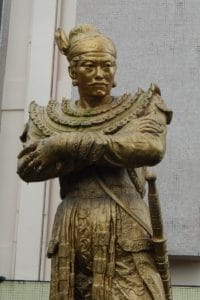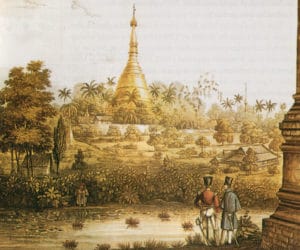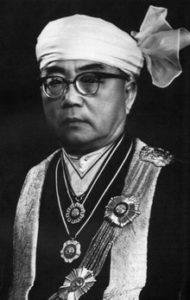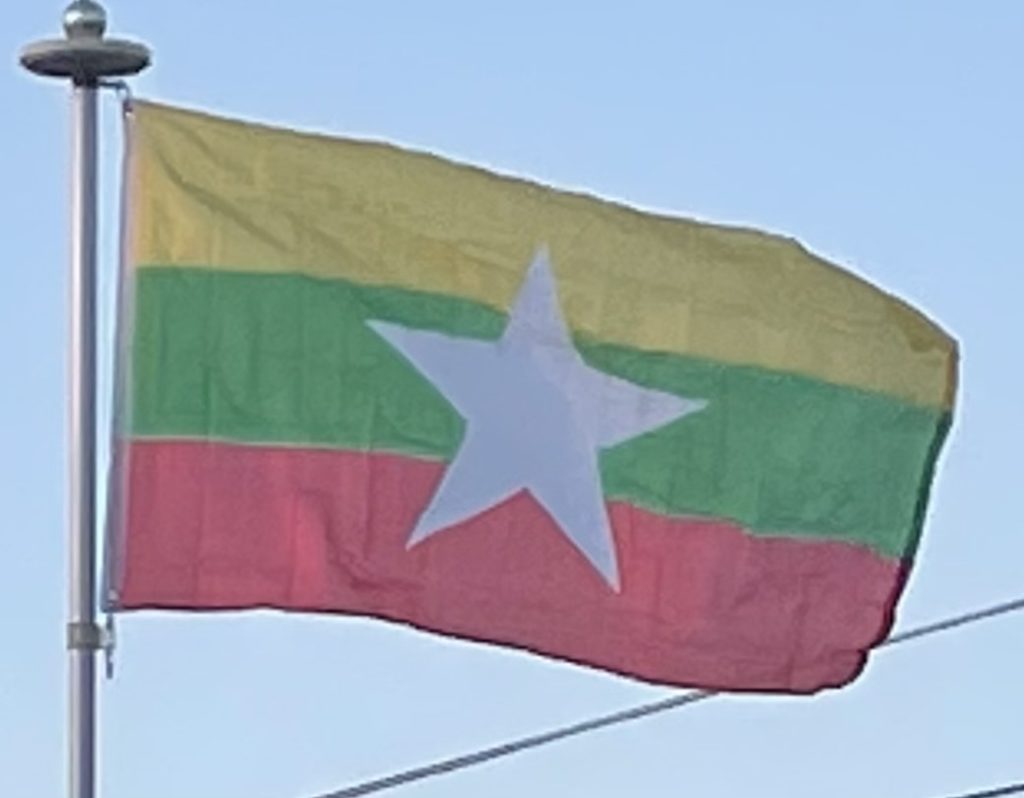
With Burma preoccupied by the Chinese threat, Ayutthaya recovered its territories by 1770 and went on to capture Lan Na by 1776. Burma and Siam went to war until 1855, but all resulted in a stalemate, exchanging Tenasserim (to Burma) and Lan Na (to Ayutthaya). Faced with a powerful China and a resurgent Ayutthaya in the east, King Bodawpaya turned west, acquiring Arakan (1785), Manipur (1814) and Assam (1817). It was the second-largest empire in Burmese history but also one with a long ill-defined border with British India.
The breadth of this empire was short lived. In 1826, Burma lost Arakan, Manipur, Assam and Tenasserim to the British in the First Anglo-Burmese War. In 1852, the British easily seized Lower Burma in the Second Anglo-Burmese War. King Mindon Min tried to modernize the kingdom and in 1875 narrowly avoided annexation by ceding the Karenni States. The British, alarmed by the consolidation of French Indochina, annexed the remainder of the country in the Third Anglo-Burmese War in 1885.
British Burma (1885–1948):
In the 18th century Burmese rulers, whose country had not previously been of particular interest to European traders, sought to maintain their traditional influence in the western areas of Assam, Manipur and Arakan. Pressing them, however, was the British East India Company, which was expanding its interests eastwards over the same territory. Over the next sixty years, diplomacy, raids, treaties and compromises, known collectively as the Anglo-Burmese Wars, continued until Britain proclaimed control over most of Burma. With the fall of Mandalay, all of Burma came under British rule, being annexed on 1 January 1886.

On 1 April 1937, Burma became a separately administered colony of Great Britain, and Ba Maw became the first Prime Minister and Premier of Burma. Ba Maw was an outspoken advocate for Burmese self-rule, and he opposed the participation of Great Britain, and by extension Burma, in World War II. He resigned from the Legislative Assembly and was arrested for sedition. In 1940, before Japan formally entered the war, Aung San formed the Burma Independence Army in Japan.
As a major battleground, Burma was devastated during World War II by the Japanese invasion. Within months after they entered the war, Japanese troops had advanced on Rangoon, and the British administration had collapsed.
Independence (1948–1962):
On 4 January 1948, the nation became an independent republic, under the terms of the Burma Independence Act 1947. The new country was named the Union of Burma, with Sao Shwe Thaik as its first president and U Nu as its first prime minister.

Unlike most other former British colonies and overseas territories, Burma did not become a member of the Commonwealth. A bicameral parliament was formed, consisting of a Chamber of Deputies and a Chamber of Nationalities, and multi-party elections were held in 1951–1952, 1956 and 1960.
The geographical area Burma encompasses today can be traced to the Panglong Agreement, which combined Burma Proper, which consisted of Lower Burma and Upper Burma, and the Frontier Areas, which had been administered separately by the British.
